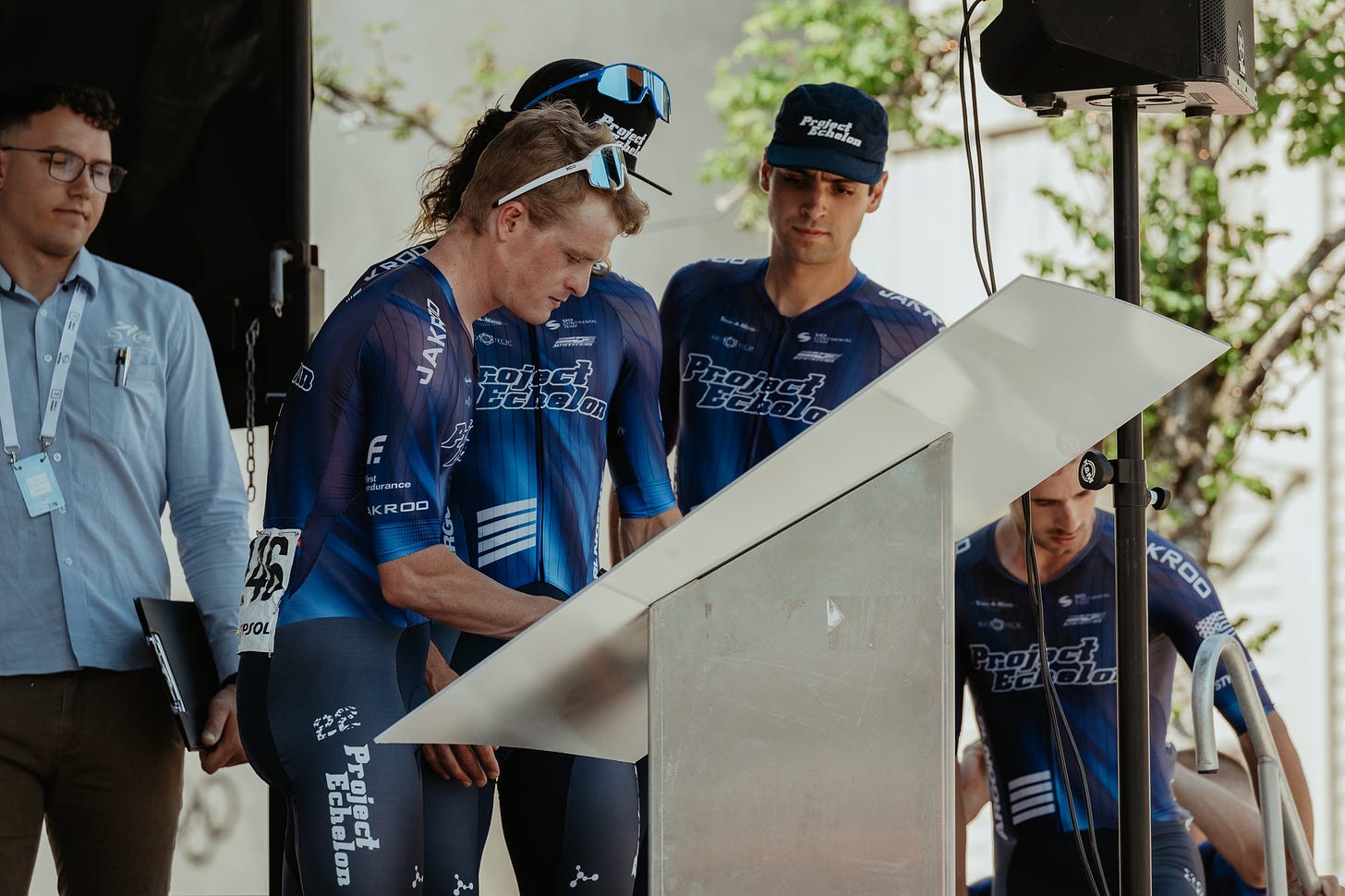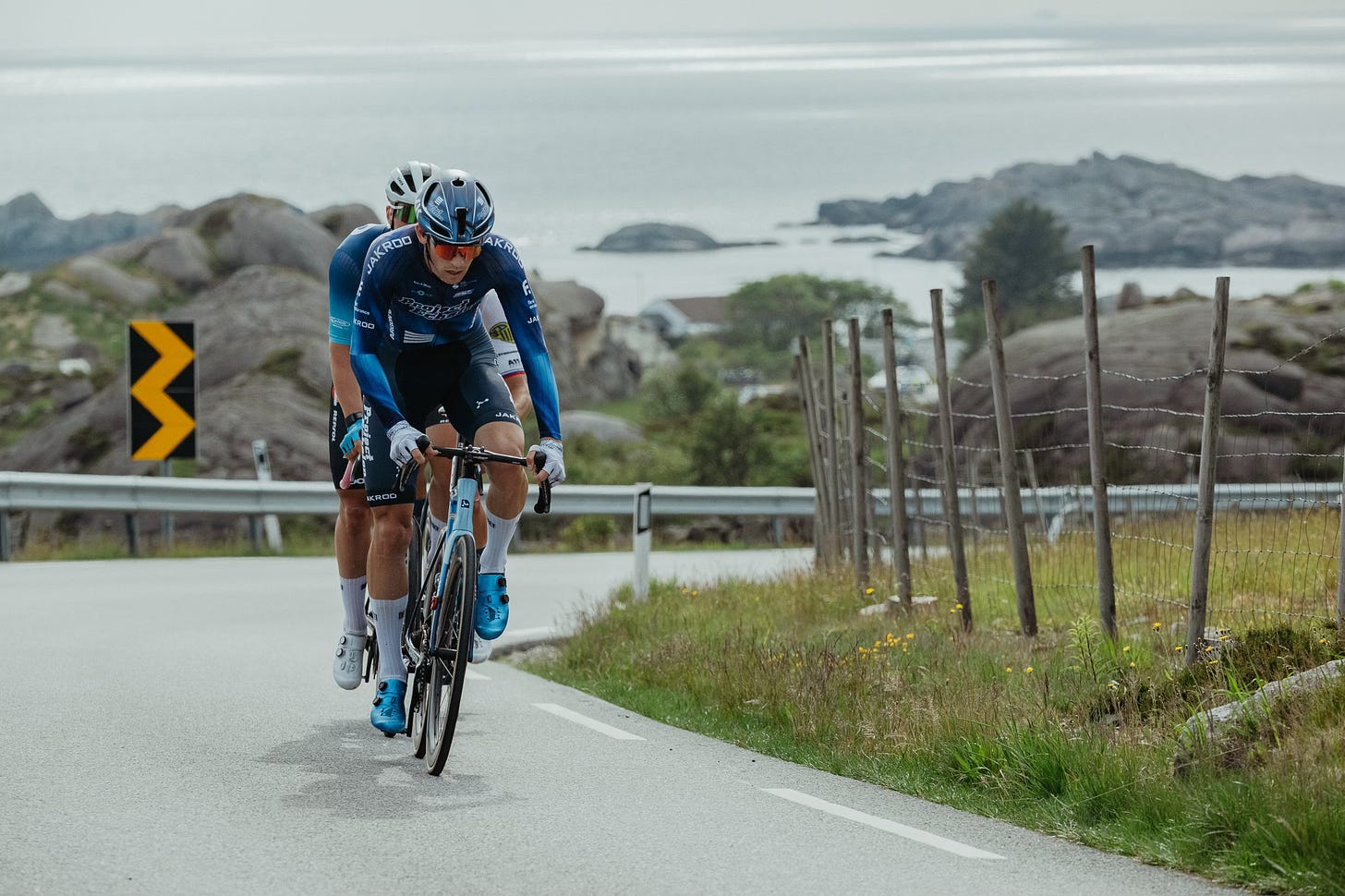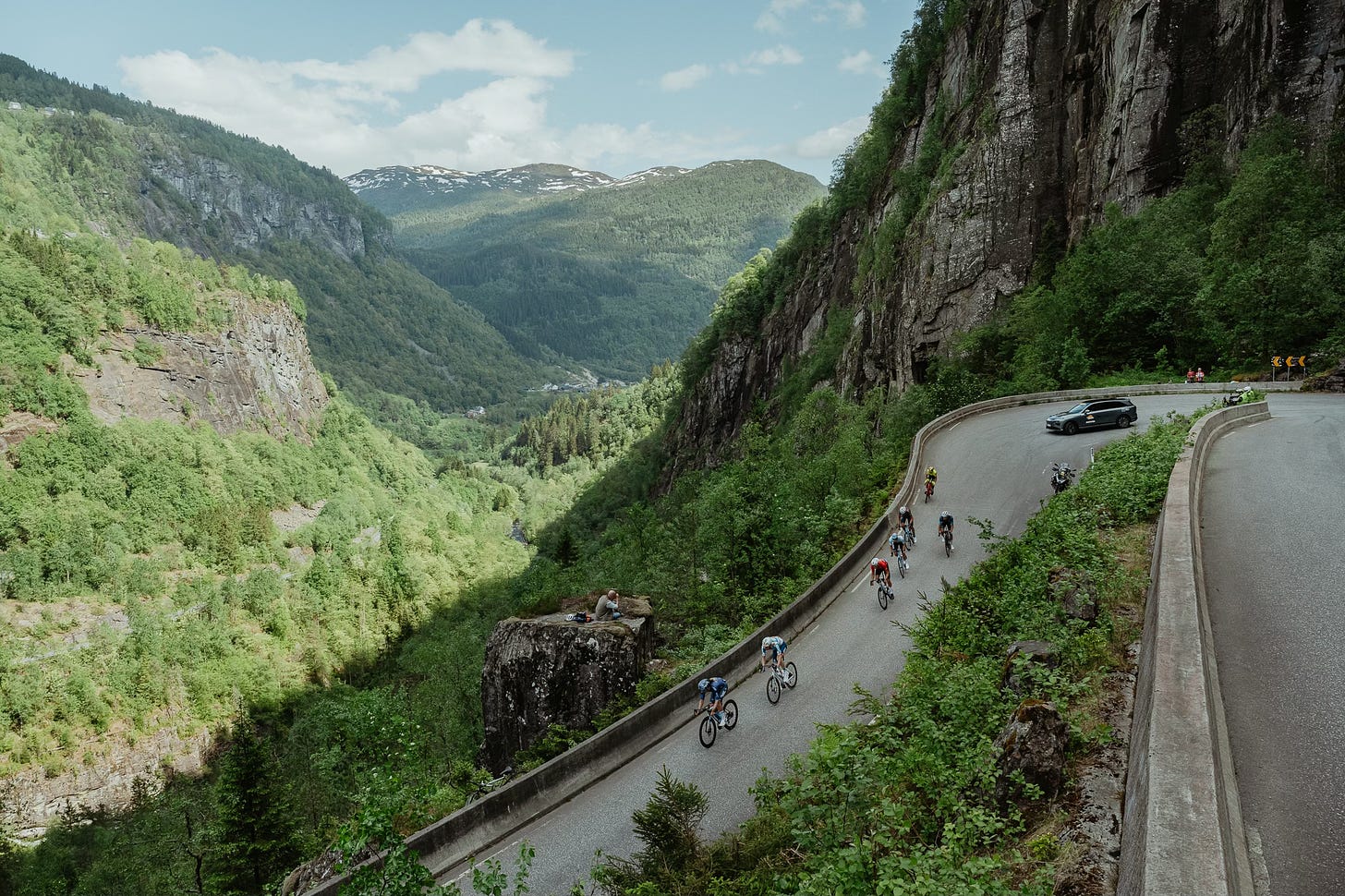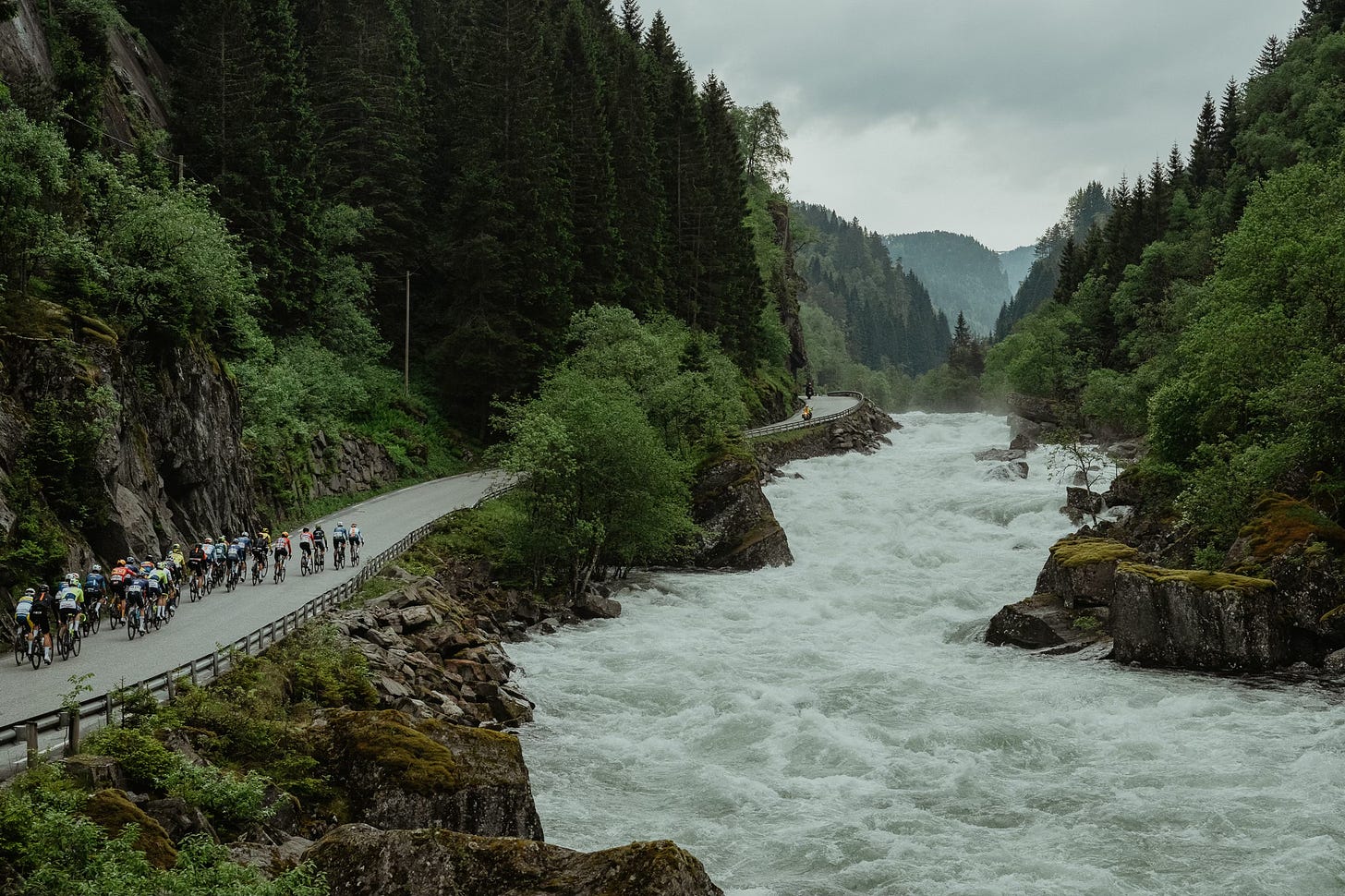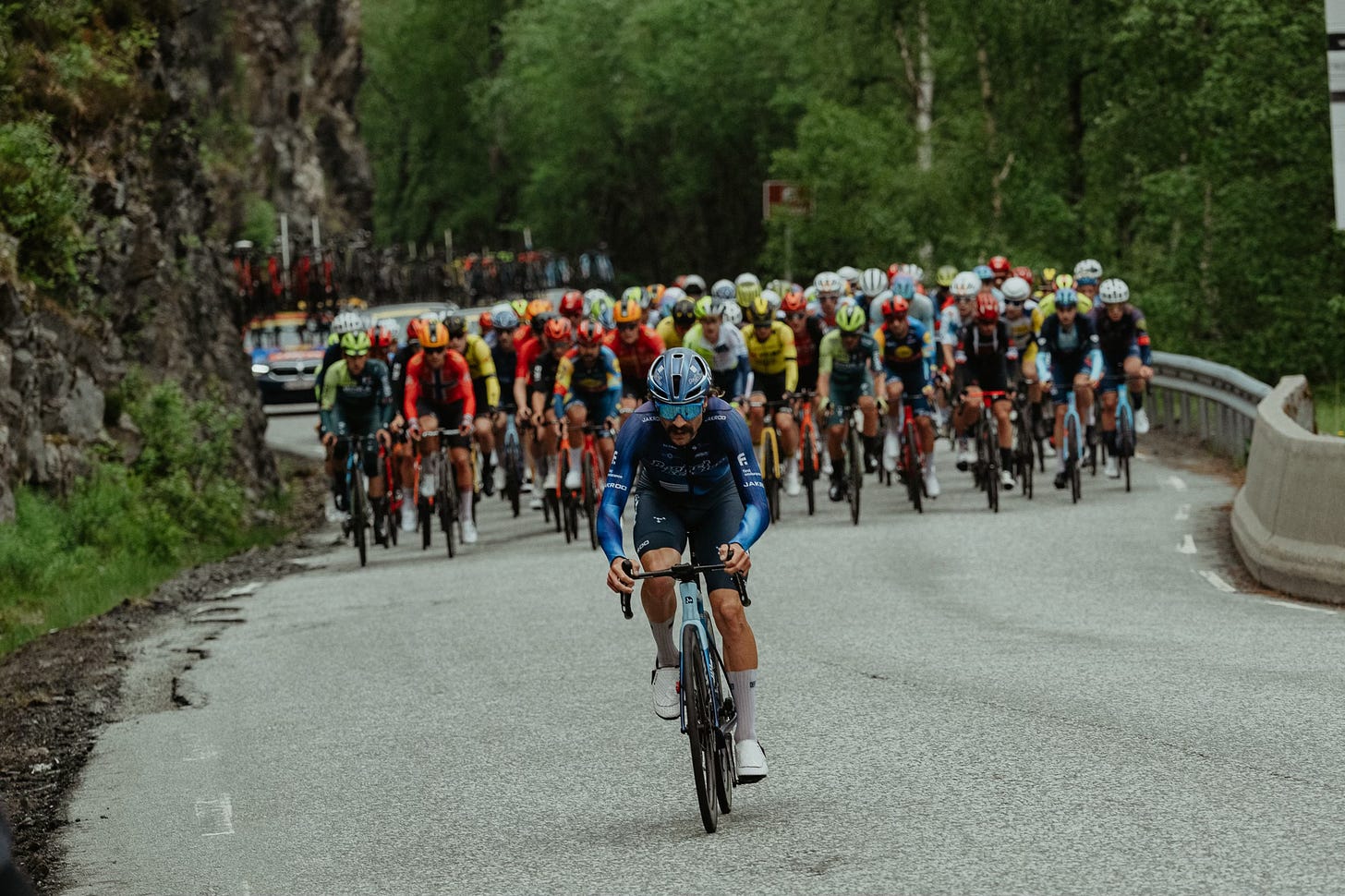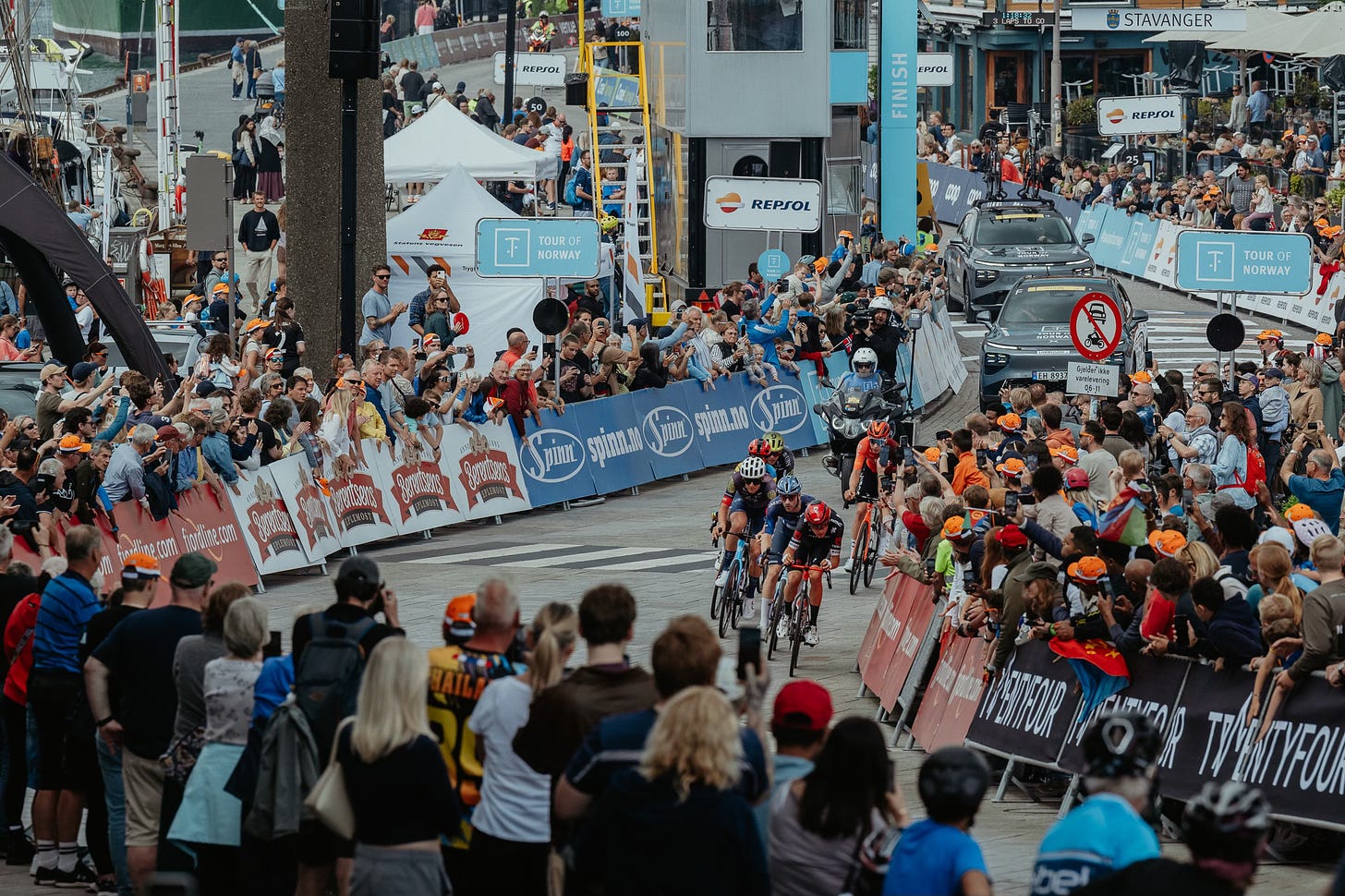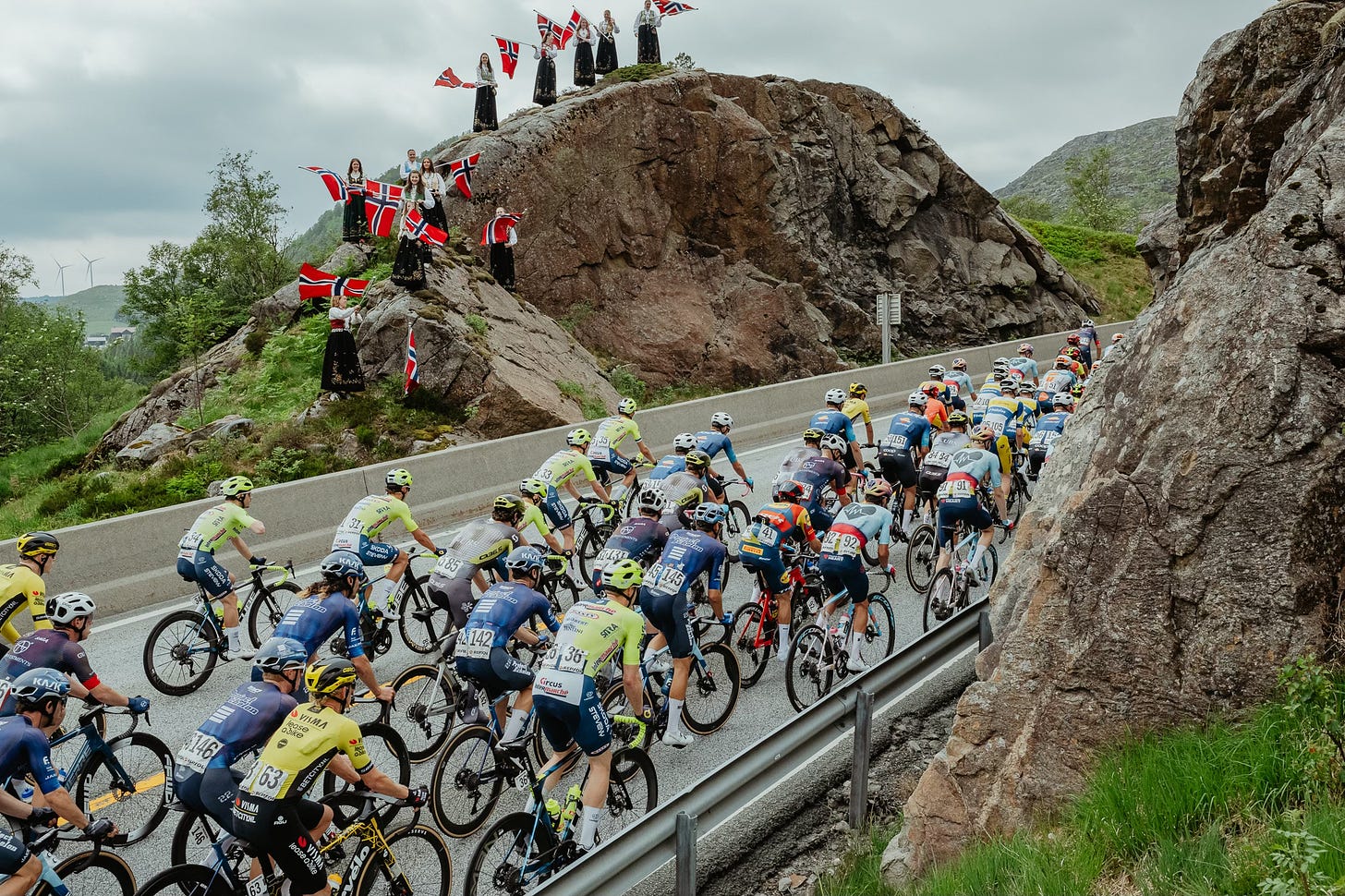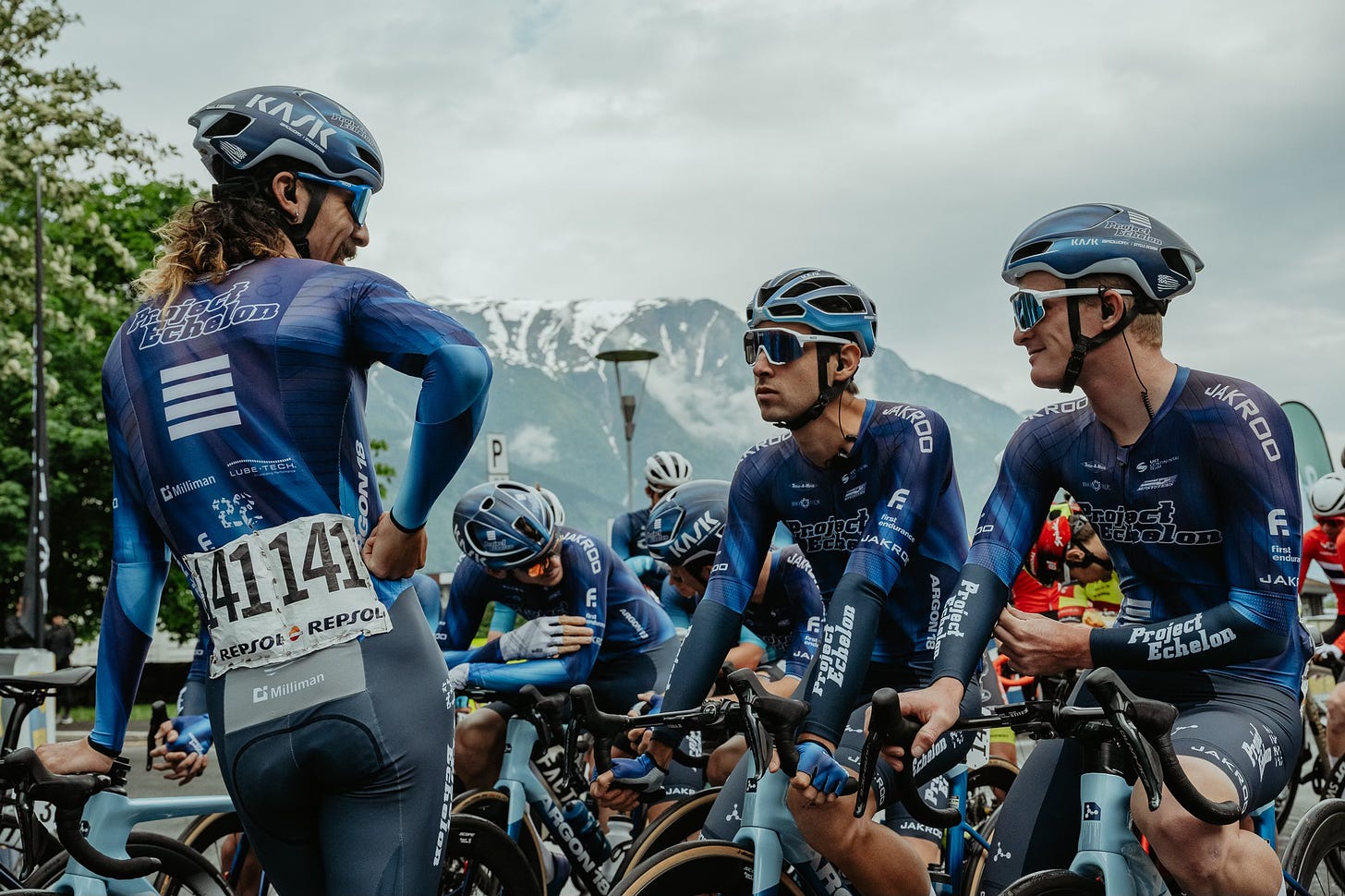The Project Echelon Files: Tour of Norway
U.S. Continental squad heads back to Europe with vigor and mission
Fans of the podcast are probably familiar with The Project Echelon Files, where the Wisconsin-based UCI Continental team, Project Echelon, allows us insider access to the team and its riders. That series has provided an intriguing look deeper into the sport. We are in our third year and plan to expand that coverage here on the pages of The Chronicle.
Fresh off four podiums, plus a fourth place in the road race, at U.S. nationals, Echelon headed abroad to take on some of the best talent in the world at the Tour of Norway. The race is a four-stage UCI 2.Pro event that runs mainly along the fjord-lined coast of Norway near Bergen.
For those, like me, who do not fully comprehend the meaning of 2.Pro as compared to 2.UWT, or even 1.2, these designations mark the quality of the competition and type of race. The “2” is a designation marking the event as a stage race as opposed to the “1,” which marks a single-day event. The “.Pro” indicates the limitations, or requirements, for the licensing of the teams who participate. A 2.Pro caps the maximum number of World Tour teams at 70% but requires the remainder of the entrants to be at least Continental teams. At the highest level, a .UWT race, is a grand tour or classic that requires the participation of all World Tour (first division) teams and permits Pro (second division) teams in the race only upon winning “wild card” spots.
For Project Echelon, a Continental (third division) team, races like the Tour of Norway are the highest calibre events they can enter. To be clear, at this level, it is very much an invitational system. As team owner Eric Hill explained “it is about them (the Tour of Norway) choosing us. As a third division team, it is our job to present ourselves to races and to earn the opportunity to race at their event, develop a relationship and foster that relationship.” As we have learned, nothing in this sport is a guarantee, but rather something earned by your results, and how you achieve those results.
For the men in blue, this opportunity developed after the cancellation of the Joe Martin Stage Race. As Hill stated, after the news about Joe Martin broke “I immediately reached out to the Tour of Norway and requested an invitation. With the help of USA Cycling and other European race directors giving us an endorsement, we were able to receive an invite and fill the important spot on our calendar.” Proving again, and again, that while results matter, how you achieve those results and present yourself in this sport matters just as much.
However, just because you can do something, doesn’t necessarily mean it makes sense to do it. For Echelon, a U.S.-based team with U.S. sponsors, a U.S. fanbase, and most importantly a connection with a U.S. non-profit that aims to educate, equip, and empower American military veterans, the focus away from our shores seems counter-intuitive. But to hear Hill explain it, it’s a logical step— “for us, coming to Europe is important because it helps to build the brand and sponsor visibility; and therefore, our mission on a global scale. This not only validates and grows excitement for racing in the United States, but it also gives us leverage with existing sponsors to increase support and to court new sponsors to show increased value and return on investment.”
“With European races being broadcast on a global scale, this becomes exponentially more important” according to Hill. But again, how does that translate into dollars to benefit the veterans’ program? Hill responds “with 22% of our non-profit programming budget coming from the team, it's important for the team’s budget to grow in order for us to enhance that programming. It also helps us to build a strong fan base so that we can continue to have an impact on U.S. cycling culture. Our goal is to come here and to race with the professionalism, determination, and perseverance that our men and women in uniform demonstrate every single day. When we do that, we honor them and we honor our mission.”
The Tour of Norway is no vacation race for the Echelon guys. Its four stages are long (142, 205, 162, and 125 km) and filled with punchy climbs that one would expect from Norwegian terrain which seems to have been carved by the harsh winter seas. In addition, despite it being May which in the United States, means mild temperatures, stabilizing weather patterns, and blue skies, in Norway it is still much cooler and more volatile. It is weather that lends validity to the local adage that there is no such thing as bad weather, only bad clothes.
For most of the media this race is heralded as the return of Wout Van Aert following his early season injury. So along with Visma-Lease a Bike are six other World Tour teams spear-headed by Ineos, and Lidl-Trek, six UCI Pro teams, and finally Echelon and three other Continental teams. In a field stacked with so much star power, how does a team build a roster to compete? Hill explains “this is the highest level race that we can do as a team, and we brought the riders that we thought could be the most dynamic and represent the team the best given the parcours, and past performances in Europe.” However this is not a zero sum game for Echelon as the future figures prominently into Hill’s calculus “to get invited back to Pro UCI racing it is important that we bring a team that is going to be active every day.” In turn that meant Tyler Stites, Sam Boardman, Scott McGill, Brendan Rhim, and Hugo Scala Jr. would suit up.
At the helm as director-sportif is Gord Fraser, the Canadian cycling legend of the 90s and 2000s, who was highly sought after by Hill to bring an additional level of professionalism to the second-year UCI team. “Gord is extremely important at these races” said Hill. “He’s done many of them, he’s raced with a lot of the (other) teams’ directors, and has their respect. There is a hierarchy in the sport, and in the caravan there is a race within the race. With him present, it is much easier for us to get the space and respect that we need to be present in breakaways, at the front of the race, or even in the caravan itself.” However, for Hill it was important for him to leave Milwaukee and be with Fraser because “being here with him has allowed me to make those same connections so that down the line I and other staff get that same respect and treatment.”
As far as goals for a team like Echelon lining up against big name riders, setting the right expectations is critical for success and progress. “The goal is always to win. Regardless of the race that we’re at, that’s the goal. Outside of that, it is to be competitive, ever present and to respect the race, while earning the respect of the World Tour teams.”
The riders were certainly not star struck by the competition, but approached each day with a sober realism. “I would not say that I had concerns, more just a respect for the level of the race. We have competed in several races this year of a similar caliber already, so I know we are competitive at this level. I would say we are an underdog at races of this level, but we are racing for the win every day and the other teams respect us” said Stites.
That sentiment was echoed by first-year team member Boardman “as someone who is still trying to soak in as much as I can during this first year of racing a concerted road racing schedule with many race days in Europe, my only goal is to try to help my teammates as much as possible. Sometimes I felt like I fell quite short of that goal, as I’m still trying to learn and improve on skills such as navigating the pack fluidity and efficiently, practicing conscious frugality with my energy expenditure, and not losing all of my nerves when the position battles start and elbows begin to get thrown.”
For a team that has absolutely dominated U.S. racing this year (winning 13 out of 18 days of racing that they’ve done) the results from Norway were a reminder that there is room to grow and that there is a distinct difference between World Tour and Continental teams. The best result for the team was Tyler Stites’ eighth place finish on stage four, which was a circuit race around the town of Stavanger. However, to call it a circuit is almost unfair because it featured 1,458 meters of climbing in 125 km which the field covered at just under 47 kph. Stites finished at the same time as the winner Alexander Kristoff, UNO-X Mobility, who slotted in just ahead of Jordi Meeus, BORA-hansgroh, and the aforementioned Van Aert. Stites was in good company at the front of the race to be sure.
In addition to Stites’ performance, there was also McGill’s 17th place on stage 3, which was classified as a large field sprint. “(With) the sprint stages, they are so much faster and more dynamic than the sprints in the U.S. In the U.S. we are strong enough to dominate the lead out so we are able to win from the front of the race. In Europe that is not possible so we have to be more careful where we spend our energy in order to get in position for the sprint. Also, the fight for position starts much farther out than in the U.S. In Europe the fight usually starts in the last 50 km and every team is competing for the same space at the front of the peloton” said McGill.
As for Hill, looking back on the experience “the lessons learned are remarkable. Everything is magnified and everything happens twice as fast. Logistics, nutrition, tactics . . . all of it happens bigger and faster. That is why, when teams who race here come to the U.S., the difference is notable. I think that’s evident in our racing style and success as well.” For Boardman who has developed a reputation within the U.S. peloton as an indispensable teammate, he used the opportunity to improve on being economical in his racing. “I was watching a lot of the World Tour and Pro Tour riders, but honestly I was watching and learning more from my own teammates who are so naturally gifted at pack navigation. You can learn a lot from watching the higher-tier professionals in the sport, but I actually think watching lower-tier riders who are good at maneuvering through the pack is more useful because you are able to see how to be truly economical with your energy.”
Results aside, this is a sport about relationships. The peloton itself appears to almost be a living thing which operates well only because everyone understands their functioning within it. “Cycling is a weird sport in that I genuinely think that your freedom to move about the group is largely dictated by the jersey you wear in the context you’re wearing it. So at most races, the most successful riders are given the most amount of space to go where they want to go because other riders trust them to hold the wheel, follow the person in front of them, etc. . .” said Boardman. It’s the classic situation of an unwritten understanding. But when a relatively unknown entity from road racing’s outer reaches, i.e. America, comes into a race there is certainly a place for some healthy speculation and a few double looks.
However, the reception that the guys were greeted with was, according to Hill way warmer than the water in the fjords. “The reception is outstanding. The race organizers and the community want to see an international race, and they want to have a presence from multiple nations. For races like Norway, where a huge part of their economy is tourism, it’s even more important to have a team from the U.S., a nation that brings a lot of tourists to them, present. Their biggest hope is that we tell the world about how beautiful this country is and how amazing the racing was so that they want to come and experience it themselves.”
However, was the reception from the World Tour and Pro teams the same? Hill says “we’ve really started to earn the respect of other teams and riders. It’s quite noticeable from last year to this year, and even from the beginning of this year to now. They know that we are here to race and that we are more than capable of contributing to the racing, not just being present but also active.”
Race photos courtesy of Project Echelon



